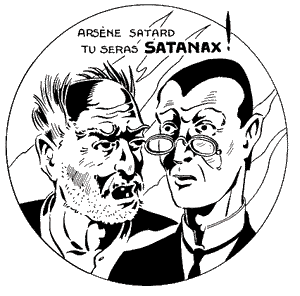


Arsène Satard, a humble court recorder,
is given superhuman powers by an old alchimist. When brought in contact with fire, he turns into the super-powered
crime-fighter known as Satanax.
He can only remain in this form for an hour. The Stories Publishing History
1. Satanax le Superhomme [Satanax The Superman]
2. [Untitled]
3. Lutte contre l'Inconnu [Fight Against The Unknown]
4. Satanax contre les Hommes-Lions [Satanax vs. The Lion Men]
5. Le Défilé des Éléphants [The Canyon Of The Elephants]
6. La Colère de Satanax [The Wrath Of Satanax]
7. Zacharias contre Satanas [Zacharias vs. Satanax]
8. Satanax Joue et Gagne [Satanax Plays And Wins]
9. Bataille de Géants [Battle Of Giants]
10. Contre ou Avec Satanax? [For Or Against Satanax?]
11. Guerre à la Guerre [War To War]
12. La Chute de l'Archange [The Fall Of The Archangel]
13. Menace sur Vallorbe [Threat Over Vallorbe]
14. Le Cauchemar est Terminé [The Nightmare Is Over]
15. Satanax et les Fantômes [Satanax And The Ghosts]
16. Satanax contre les Grands Maîtres [Satanax vs. The Grand Masters]
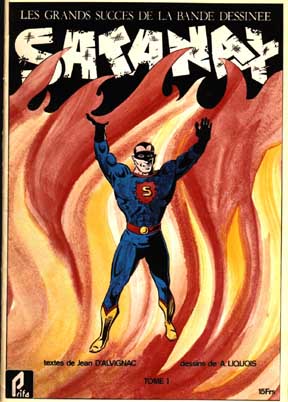
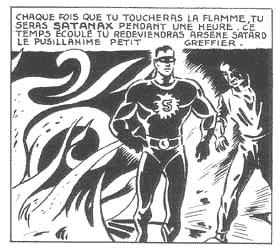
All sixteen issues of "Satanax"
were published by Editions Mondiales in 1948 and 1949. They were reprinted in three volumes by Ed. Prifo
in 1977. 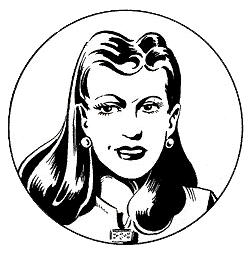
The Author
 Auguste Liquois (1902-1969) was a comic book artist and illustrator
from the 1930s and 1940s who took over Tarzan
after the Nazis banned the import of American strips in occupied France.
Auguste Liquois (1902-1969) was a comic book artist and illustrator
from the 1930s and 1940s who took over Tarzan
after the Nazis banned the import of American strips in occupied France.
Today, Liquois is remembered for his science
fiction series, Vers les Mondes Inconnus
[Towards The Unknown Worlds] (1943), a
Flash Gordon imitation serialized in "Le Témeraire".
Liquois also drew Guerre à la Terre [War
against Earth] written by Marijac and serialized in "Coq Hardi"
in 1946-47, Salvator,
another super-hero, precursor of Satanax,
serialized in "Tarzan" in 1947,
and Atomas, written
by Robert Charroux and serialized in "Mon Journal" in 1948.
 Auguste Liquois retired from comics in 1959 to devote his time
to painting and fine arts.
Auguste Liquois retired from comics in 1959 to devote his time
to painting and fine arts.
CLICK HERE FOR A GALLERY OF SATANAX COVERS
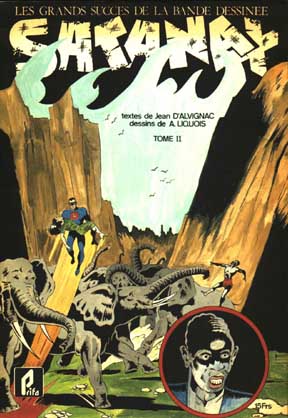
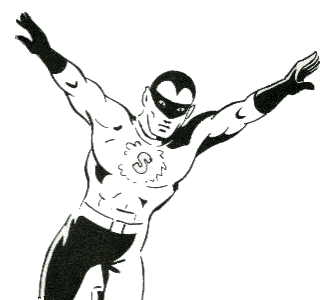
Satanax © 2003 Liquois/d'Alvignac. All rights reserved.